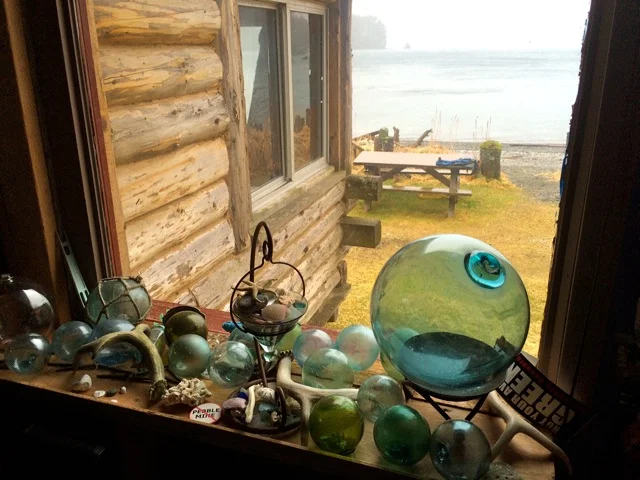The graceful sweep of the hull, the cut of the flying bridge and the railings that lead to it, the 27 degree angle utilized in much of the construction: these tell-tale signs advertise a Hansen Boat Co. vessel as much as the winged insignia on the bow of the boat. Now, a Hansen admirer from Ketchikan is working to document the history of this stalwart business and the boats that have come from Hansen Boat Co.’s shipyards.
“I asked a lot of questions when I was a kid on the docks of Ketchikan about the boats,” Kevin Kristovich explains, “and I remember most of the information.” Kristovich is a third generation mariner who started seining when he was a teenager. More recently, he started sharing his boat photos and knowledge within a Facebook group. Group members encouraged him to convert his passion for Hansens into a book. Now, Kristovich is several years in to writing Hansen Boat Co: The Men, The Boats, and how they were “Maid.”
The Hansen family settled in the Seattle region in the late 1800s, coming to the US from Norway. TheViking ship in the center of the company’s brand pays homage to their Scandinavian heritage. The Hansen’s were a fishing family who initially constructed seine boats for their own use. Reportedly, each time they built a boat they would find a way to improve the design, sell their vessel, and then go back to the shipyard to innovate.
In 1927, Harold Hansen Boat Co. was officially established in Ballard. Harold’s son, Don Hansen, took a class in boat design at Ballard High School and got that very job working for his family’s business. Kristovich asserts that the company would produce boats for a decade based off the same design. Likewise, many of their boats were christened with a similar name, like Norse Maid, Victory Maid, Yankee Maid.
The boats have a distinctive appearance, but through the years Hansen boats adapted to changing materials and technologies. During the 1950s, the boats had a greater beam to accommodate larger fish holds. Cabins increased in size, as well, to accommodate on-board amenities like hot and cold running water, refrigerators, and sinks. In 1955 the Puretic power block revolutionized seining and became an important feature on all commercial seine vessels.
In 1966, Hansen put out its last wooden seiner, the Patricia Ann. Henceforth steel construction dominated, although beginning in the 1970s the company produced fiberglass boats. It was in 1978 that the company dropped the “Harold” from its name, becoming merely Hansen Boat Co.
Kristovich notes that since the 1980s, the company has been mostly engaged in conversion projects and repairs from the company’s Everett shipyard. However, the company still puts out new commercial fishing boats, with the most recent being the Anthem. “They are still pumping out boats. It’s a good testament to time.”
“I have 500 photographs but not a lot of information about the Hansen family themselves. They are a low-key family business,” Kristovich explains. He will be spending time in Washington this fall to seek out more information about this family enterprise, now in its fifth generation.
Kristovich’s work in progress is more about the boats that Hansen produced than the business which built them. His book will include the stories of boat owners, captains, crews, and the fishing communities that have turned to Hansen for generations, communities including Hoonah and elsewhere. “There aren’t a lot of Hansen’s in Prince William Sound,” he says, “but there were plenty of pocket seiners in Kodiak and Chignik.
“There was nothing cheesy or cheap about their boats,” he continues, “They built a prettier boat than most other builders,” Kristovich says.
Kristovich has started a GoFundMe campaign to fundraise for travel, research, and publication costs associated with producing the book. He is still seeking good quality photos that show the entirety of Hansen boat, including the rigging. Kristovich is also looking for help to identify the original photographers who took some of the photos he would like to highlight in the book. You can see these photos by visiting “Hansen Boat Co.” on Facebook and contribute cash to this project at gofundme.com.
